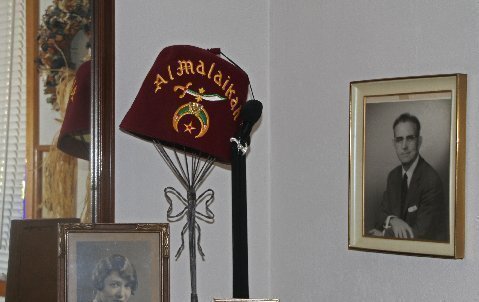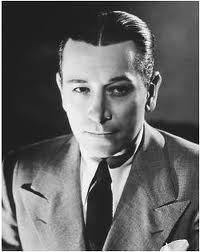 road sign
road signSoup is a primarily liquid food, generally served warm or hot (but may be cool or cold), that is made by combining ingredients of meat or vegetables with stock, milk, or water. Hot soups are additionally characterized by boiling solid ingredients in liquids in a pot until the flavors are extracted, forming a broth. Soups are similar to stews, and in some cases there may not be a clear distinction between the two; however, soups generally have more liquid (broth) than stews.
In traditional French cuisine, soups are classified into two main groups: clear soups and thick soups. The established French classifications of clear soups are bouillon and consommé. Thick soups are classified depending upon the type of thickening agent used: purées are vegetable soups thickened with starch; bisques are made from puréed shellfish or vegetables thickened with cream; cream soups may be thickened with béchamel sauce; and veloutés are thickened with eggs, butter, and cream. Other ingredients commonly used to thicken soups and broths include rice, lentils, flour, and grains; many popular soups also include pumpkin, carrots, potatoes, pig's trotters and bird's nests.
Other types of soup include fruit soups, dessert soups, pulse soups like split pea, cold soups and other styles.
Evidence of the existence of soup can be found as far back as about 20,000 BC. Boiling was not a common cooking technique until the invention of waterproof containers (which probably came in the form of clay vessels). Animal hides and watertight baskets of bark or reeds were used before this. To boil the water hot rocks were used. This method was also used to cook acorns and other plants.
The word soup comes from French soupe ("soup", "broth"), which comes through Vulgar Latin suppa ("bread soaked in broth") from a Germanic source, from which also comes the word "sop", a piece of bread used to soak up soup or a thick stew.
The word restaurant (meaning "[something] restoring") was first used in France in the 16th century, to refer to a highly concentrated, inexpensive soup, sold by street vendors, that was advertised as an antidote to physical exhaustion. In 1765, a Parisian entrepreneur opened a shop specializing in such soups. This prompted the use of the modern word restaurant for the eating establishments.
In the US, the first colonial cookbook was published by William Parks in Williamsburg, Virginia, in 1742, based on Eliza Smith's The Compleat Housewife; or Accomplished Gentlewoman's Companion, and it included several recipes for soups and bisques. A 1772 cookbook, The Frugal Housewife, contained an entire chapter on the topic. English cooking dominated early colonial cooking; but as new immigrants arrived from other countries, other national soups gained popularity. In particular, German immigrants living in Pennsylvania were famous for their potato soups. In 1794, Jean Baptiste Gilbert Payplat dis Julien, a refugee from the French Revolution, opened an eating establishment in Boston called "The Restorator", and became known as the "Prince of Soups". The first American cooking pamphlet dedicated to soup recipes was written in 1882 by Emma Ewing: Soups and Soup Making.
Portable soup was devised in the 18th century by boiling seasoned meat until a thick, resinous syrup was left that could be dried and stored for months at a time.
Commercial soup became popular with the invention of canning in the 19th century, and today a great variety of canned and dried soups are on the market.
Canned
Canned soup can be condensed, in which case it is prepared by adding water (or sometimes milk) or it can be "ready-to-eat", meaning that no additional liquid is needed before eating. Condensed soup (invented in 1897 by John T. Dorrance, a chemist with the Campbell Soup Company) allows soup to be packaged into a smaller can and sold at a lower price than other canned soups. The soup is usually doubled in volume by adding a "can full" of water or milk, about 10 US fluid ounces. The "ready-to-eat" variant can be prepared by simply heating the contents of the can on a kitchen stove or in a microwave oven, rather than actually cooking anything. Such soups can be used as a base for homemade soups, with the consumer adding anything from a few vegetables to eggs, meat, cream or pasta.
- 2 (16.3-ounce) packages refrigerated buttermilk biscuits
- 1 1/4 cups shredded Colby and Monterey Jack cheese blend
- 1 1/4 cups shredded Cheddar cheese
- 1 (4-ounce) can chopped green chilies, drained
- Preheat oven to 350º. Coat a 9- x 13-inch baking dish with cooking spray.
- Separate biscuit dough into 16 biscuits. Cut each biscuit into 6 pieces and place in a large bowl. Add cheeses and chilies; toss until well mixed. Place in baking dish.
- Bake 25 to 30 minutes, or until golden and cooked through. Pull apart and serve.
And births this date include...
1933 – Donna Douglas, American actress (d.2015)
1942 – Kent McCord, American actor
1956 – Linda Hamilton, American actress
On the fourth Monday in September, National Family Day encourages everyone to gather around the table and enjoy a meal together.
The old saying goes, “Families who eat together, stay together,” but did you know they may also be reducing the risk of addiction? According to the National Center on Addiction, families who eat three or more meals a week together reduce a teen’s risk of using tobacco, alcohol, and other drugs.
That’s a fantastic outcome on its own. Family bonding is just a bonus. However, there are more benefits. For example, families who eat together also learn healthy eating habits, eat smaller portions, and are less likely to stress about food.
And back to the bonding – when parents engage with their children over a meal, their relationships are better. They learn responsibility while helping to prepare the meal and cleaning up. Children feel like they are a part of a unit, a team. They connect with the people who mean the most to them and who know them the best. Parents become and remain the people they turn to when the significant problems crop up.
Look forward to conversations about grades, dating, borrowing the car, and moving away. Don’t forget the debates about politics. Our children won’t always agree with us – and that’s ok. Why? Because we raise them to be independent thinkers and to express themselves effectively. These conversations start at a dinner table. They shouldn’t begin when our children’s world turns upside down.
HOW TO OBSERVE NATIONAL FAMILY DAY
Have a meal with your family. It doesn’t have to be fancy. But it does have to include food and your family. Gather everyone and set the table. Talk to each other. Find out about everyone’s day. Then, commit to having another meal together before the week is out. Take a family photo and share it using #NationalFamilyDay.
Educators and families, visit the National Day Calendar Classroom for fun ways to Celebrate Every Day!
NATIONAL FAMILY DAY HISTORY
The National Center on Addiction declared National Family Day in 2001 as a way to combat substance abuse among teens. Their research showed that teens who ate meals with their families were less likely to fall into substance abuse. They also tend to do better in school and eat healthier.























No comments:
Post a Comment